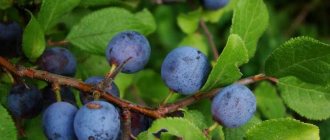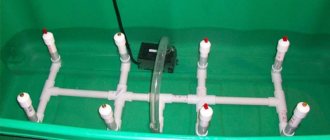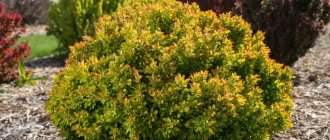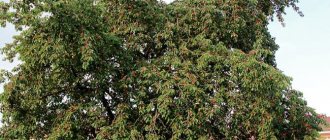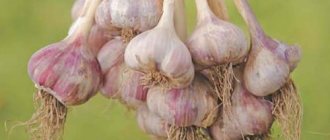Peanuts, or leguminous grass (the correct name of the crop), are imported from warm countries. The fruits contain fatty oils, amino acids, vitamins B, E, micro- and macroelements, and nutrients. Their calorie content in raw form is 552 kcal per 100 g. Peanut butter, vegetable oil, flour are made from them, they are added to halva, and the cake is used as animal feed. Now the product is popular in Russia. Experienced gardeners know how peanuts grow and cultivate them in their plots.
Structure and development
Peanuts, or groundnuts, are annuals, but in the wild they are perennials. The culture is self-pollinating, grows up to 25-40 cm, some varieties - up to 70 cm.
Brief description of the appearance of the plant:
- shoots erect or creeping;
- leaf blades are pair-pinnate, oval, pointed, up to 11 cm in length, glossy on the outside, pubescent on the inside, located on a thick petiole;
- the flowers are bright yellow, irregular in shape, the lower ones are on stalks, those on top are sessile;
- The root system is branched, tap-type, with a large number of lateral roots.
At the end of June - beginning of July, flowering begins: inflorescences form on the shoots, which are collected in brushes.
The lowest flowers produce fruit. After fertilization, the ovary grows and a gynophore is formed. Peanut beans ripen underground, they are 1-6 cm long, with thick leaves. Each of them contains 2-4 seeds, enclosed in a brown-pink shell. The shell of the kernels has a mesh structure, which is why the crop was called peanuts, which is translated from Greek as “spider”.
Productivity
The world's main producers: India, Argentina and China. The USA, Indonesia, Nigeria and other countries also export it. Productivity depends on the climate and the selected variety. World exports are 35-36 million tons of beans per year.
The ovary is formed from June to the end of autumn. From 1 to 5 dozen pods are formed on the roots of one plant. From 1 bush of the most productive varieties you can collect about 40 pieces of nuts. About 1.4 tons of nuts are collected from 1 hectare.
Wild varieties produce only a few fruits per bush. Their size is often inferior to cultivated varieties, but they are more resistant to disease.
Where is it found and cultivated?
Brazil is considered the birthplace of peanuts. The nut was discovered by Europeans during sea voyages to the New World. Spanish and Portuguese sailors brought the plant to Europe; Because the beans looked like coffee beans, the population first consumed them instead of coffee. Over time, the culture appeared in India, the Philippines, China, Africa, and Japan.
In Africa
Peanuts were brought to the African continent by colonialists in the 17th century. The Aborigines considered it a sacred food. Local residents used the product as food and gave it to livestock. Because of the crop's ability to enrich the soil with nitrogen, it was planted after cotton, which depleted the soil. Over time, the population learned to extract peanut oil from the fruits of the underground nut. His plantations grew widely, and the beans began to be exported.
In Asia
Peanuts appeared in Asia in the 16th century. Residents of Asian countries liked it. Now India, China, and the Philippines have large groundnut plantations and export the product.
In America
The plant appeared in the USA in the 19th century. At first the fruits were food for the poor. For a long time, farmers did not cultivate peanuts on a large scale. At the beginning of the 20th century. Agrochemist Carver studied the composition of beans and found many ways to use them not only in cooking, but also in medicine.
Farmers were convinced that the product was profitable to cultivate, and since then it has been highly valued.
Which family: nuts or legumes?
To understand whether it is a nut or not, it is important to know which family the plant belongs to. It also has other names: Chinese nut, underground peanut. Surprisingly, the plant belongs to the legume family, and the fruit is a “groundnut” or “cultivated peanut.”
It is incorrect to call peanuts both a nut and a bean. The correct definition is leguminous grass.
The product is rich in protein, and unlike walnuts, it does not contain much fat, so it is a dietary product.
How do peanuts grow?
The difference with peanuts is that you won't see them on the tree like other nuts. Fruits develop in the soil, a process called geocarpy.
Features of the growing season
The growing season of the crop lasts 150 days. Flowers bloom first on the lower part of the stem, then on the upper. The bush blooms for only a day, during which time the inflorescences have time to pollinate. Those that are at a height of more than 20 cm are not able to bear fruit. The pollinated ovaries (gynophores) first grow upward, then go deep into the moist soil to a depth of 8-9 cm, where the formation of beans occurs. The inflorescences remaining on the surface die.
Approximately 40 beans ripen on one plant.
Pre-sowing activities
Before sowing the crop, the soil needs to be prepared - dig up to a depth of 30 cm, add humus. Add lime to acidic soil, and add organic matter and gypsum to saline soil.
Sowing, planting
Peanuts are grown by seeds or seedlings, depending on the region.
Sowing material is prepared in late April - early May. The peeled kernels are disinfected in a manganese solution and left for hardening for 3 days at a temperature of +2...+3 °C during the day and at room temperature at night. They are then germinated in a damp cloth. With the appearance of sprouts, the seeds are planted in pots with peat or immediately in a permanent place.
Harvest
The fruits are collected 3-4 months after planting, i.e. at the end of September - beginning of October (the leaves on the bushes turn yellow by this time, the stem dries out). It is important to do this before frost so that the harvest does not go to waste. Peanuts are dug up like potatoes, cleared of soil, dried for 2 weeks, then the fruits are picked and dried for another 14 days. When the shell becomes brittle, the kernels are separated from the shells.
Growing
This legume cannot be called too whimsical, but in order to get a good harvest, it is necessary to comply with certain conditions for growing peanuts.
The kernels are planted in small pre-formed grooves. A certain distance (up to 5 cm) is left between them so that later the seedlings can be conveniently hilled. It needs to be watered regularly, as the plant likes loose and moist soil, although it is not as moisture-loving as other types of nuts.
After the growing season has ended, they stop watering it. While it blooms and forms fruits, it is fed. The harvest is harvested in late summer or early autumn. First, the bush is dug up and dried; the pods must dry on the stem for three days, after which they are collected and sent for storage. In addition to cultivated varieties, peanuts are also found in nature.
Types and varieties of peanuts
In the process of work, breeders from different countries have created many varieties of peanuts, adapted to humid and dry climates, to highland soils and lowlands. Varieties of the crop differ in bean size, yield, shoot height, and taste.
Spanish group (Spanish varieties)
In the first half of the 20th century. Spanish varieties have become popular in the USA:
- Dixie Spanish;
- Shafers;
- Natal;
- Argentinean;
- Spanko;
- White core.
The bushes are low, up to 35 cm, cultivated in South America. Spanish is grown mainly by seedlings. The varieties are characterized by a high content of oily substances. The kernels are small, pink-brown. They are used to prepare fried salted peanuts, paste, and butter. The productivity of Spanish is average; one of the disadvantages is instability to diseases.
Valencia Group
These peanuts are cultivated in the USA and Mexico. The bushes reach 1 m, ripen in 80-110 days, and up to 50 beans are harvested from each. Varieties: Texas red and white, Tennessee. They are distinguished by small, round kernels with a red skin; each pod contains 3 nuts weighing 0.5 g. The fruits have a pleasant taste and aroma. Used in confectionery production.
Group Runner
Brought out in the 40s. XX century, grown in the southern and eastern American states.
Varieties of this group:
- Georgia Green;
- Bradford;
- Egyptian giant.
They are characterized by large nuts and increased taste. The bushes are more branched and voluminous, so when planting they maintain a distance: between rows - 70 cm, between plants - 45 cm. The yield is high, oil and salted peanuts are prepared from the fruits.
Virginia Group
Virginia group beans are large and form at a depth of 5-10 cm.
The best varieties:
- North Carolina;
- Gull;
- Wilson;
- Shulamit;
- Perry.
Collect 5 kg of fruits from 10 square meters. m. The kernels are healthy, they contain a lot of antioxidants. They are used fried in the manufacture of sweets, ice cream, chocolate, and cakes.
Possible harm
Unfortunately, eating peanuts is not always beneficial. One of the problems is the high fat content, which is quite easily digested. This is good when hiking – a small amount of the product gives you strength. But with a sedentary lifestyle, excess energy is not burned, but is deposited in the form of fat. Therefore, eating it is not useful for everyone.
In addition, there are widespread cases of peanut allergies, especially in the United States. Some people should absolutely not eat foods that even contain small amounts of groundnuts - this can easily lead to anaphylactic shock and death.
So you should seriously think about the permissible amount of peanuts in your diet - you need to know in moderation in everything.
Is it possible to grow peanuts in Russia?
The groundnut first appeared in the Odessa Botanical Garden in 1825. In 1851 it was sown in Georgia, the seeds were delivered from Brazil.
Few people know where peanuts grow in Russia now. It is grown on farm plots in the south of the Russian Federation; several varieties are adapted for this: Krasnodarets-14, Bayan, Spanish, Stepnyak, Valencia-433, Klinsky. In regions with cold climates, greenhouses are used to grow groundnuts.
In the greenhouse
The crop is easy to grow in greenhouse conditions:
- Selected seeds, which are no more than 2 years old, are shelled and soaked in a growth stimulator.
- Leave for a day in a damp cloth.
- Sprouted beans are deepened 3 cm into cups with peat or a substrate of sand and humus, watered, and covered with film.
- Ventilate regularly and remove the cover after the leaves appear.
Plants require an air temperature of +20℃ and above. The sprouts are thinned out, leaving the stronger ones. It is recommended to plant the crop next to tomatoes.
Growing in the garden
In the garden plot for peanuts, choose a lighted and fertile place. Seedlings are prepared in late March - early April. After 1-1.5 months they are transplanted to a permanent place. In the regions. Where late frosts occur, plants need to be covered at night. Maintenance is simple: timely watering, hilling, fertilizing.
Planting peanuts in open ground
It is not difficult to grow peanuts in open ground; for this you need an open, fertile area located away from buildings.
Features of growth
Peanuts prefer warmth, sun, moderate humidity, and regular watering. Ripens in 120 to 160 days - it depends on the variety and climatic conditions.
What time to plant in open ground
The end of May is the right time for planting, and the ground should warm up to +15 ℃. Peanut growth is promoted by air temperature +20…+27 ℃. If the readings are below +15 ℃ and above +31 ℃, the plant does not develop.
Crop rotation rules
It is recommended to plant peanuts after cucumbers, zucchini, tomatoes, cabbage, potatoes, and cereals. This reduces the risk of developing fungal diseases. It is not advisable to plant it where legumes used to grow. You can plant eggplants, tomatoes, peppers, and potatoes nearby.
Suitable soil
The culture prefers loose, fertile soil, without stagnant moisture and groundwater. Choose a sunny site; in the shade the bushes will die. Peanuts need loamy soils, sand, and black soil. Heavy soil is mixed with sand or peat. The soil is dug up, lumps are broken up and weeds are removed.
Landing rules
Seeds are suitable only raw, large, peeled. Fried, sweet, salty ones are not suitable for reproduction. The seed is germinated in a damp cloth, as for a greenhouse. Bury into the ground 5-6 cm.
There are several landing options:
- In a checkerboard pattern. The distance between rows is 25-30 cm, between holes - 50 cm.
- Square-cluster method. Make 4 holes in the corners of a square measuring 60x60 cm, place 5-6 seeds in each.
- In rows. The distance between the beds is 60-70 cm, the holes are 15-20 cm.
Before planting, fertilizers are poured into the holes - nitroammophosphate with saltpeter - 50 g per 1 square meter. m. Water the holes, put 3-4 hatched nuts in each, and fill them up. The emergence of seedlings is expected in 10-14 days.
Seedlings are planted in the same way.
Is it necessary to weed and hill up?
They begin to hill up the plantings when the plant has finished flowering. The loose soil is raised from all sides of the bush by 50-70 cm. The procedure is carried out after watering, when the soil is wet. Repeat after 10 days, so the stem is underground.
The bushes are weeded until the leaves close, then the overgrown shoots will suppress the growth of weeds.
Possible problems
It is one of eight foods that are considered major food allergens and require identification on food labels.
This plant has been found to have high oxalate content. These are naturally occurring organic acids found in a wide variety of foods, and for certain medical conditions their intake must be limited to prevent excessive accumulation in the body.
Peanuts are sensitive to mold and fungal infestations. Of particular concern is aflatoxin, a poison produced by the fungus Aspergillus flavus. Although modern, fairly sophisticated storage and handling methods virtually eliminate the risk of consuming aflatoxin, it is a known carcinogen that is twenty times more toxic than the chemical pesticide DDT and is also associated with possible development of mental retardation and decreased intelligence. To prevent ingestion of aflatoxin, there are specific guidelines: The maximum aflatoxin level for all food and animal products, including peanut butter and other peanut butter products, should be 20 parts per billion.
When purchasing raw beans, it is recommended to store them in a cool, dry place (fungus develops at temperatures between 30 and 36 °C with high humidity). Roasting peanuts is thought to provide greater protection against aflatoxin and also improves their digestibility. At home, this should be done carefully - in the oven at a temperature of about 75 ° C for 15-20 minutes to preserve the beneficial oils.
Features of care
If agricultural techniques are followed - correct and timely watering, fertilizing, hilling - up to 50 pods ripen on the bush. Each of them contains 1-7 seeds.
Plant nutrition
Peanuts are fed with mineral fertilizers three times a season.
For 1 hundred square meters you will need:
- nitrogen - 0.4-0.6 kg;
- phosphorus - 0.5 kg;
- potassium - 0.4 kg (for sandy loam soil).
Periodicity: at the moment of formation of true leaves, then as buds and fruits appear.
Watering frequency
Peanuts do not like stagnant moisture. Water it once every 10 days, when the top layer of soil dries out. This is done in the morning, warm water is directed along the furrows between the rows or drip irrigation is used.
A month before digging the fruits, you need to reduce watering, 2 weeks - stop completely.
Peanut pests and diseases with photos
The crop is rarely affected by fungal diseases; this happens with high air humidity and warm weather. To get rid of the fungus, broad-spectrum fungicides are used. The photo below shows the affected parts of the plant.
Powdery mildew
The leaves become covered with a white coating on both sides, then die and turn yellow. Powdery mildew affects both stems and embryos.
Phyllosticosis
The picture of brown spot disease (phyllostictosis) is different - rusty-gray or ocher spots are visible on the foliage. They gradually grow to 6 mm in diameter, the middle of the leaf fades, and the edges acquire a brownish-purple hue.
Alternaria blight
Alternaria can appear at the end of the growing season. Black spots up to 15 cm in diameter are visible on the edges of the foliage. Over time, they become larger, merge with each other, and the leaves die off.
Fusarium wilt
Appears in the flowering phase. The shoots wither, necrotic areas form in the upper part of the root, the upper leaves turn yellow and dry out. Parts of the stem die off and the bush dies. This occurs due to the formation of rot in the root system.
Gray rot
Infection most often occurs after flowering; the disease is characterized by the presence of brown spots on the stems and leaves. Fruit formation stops.
Pests
Peanuts are attacked by aphids and caterpillars. To get rid of them, the planted area is covered with a layer of tobacco dust or wood ash.
Thrips appear on plants; to combat them, the bushes are sprayed with acaricides.
The click beetle, or wireworm, can be found on the crop. Its larvae are able to gnaw through the shell and make passages there. Traps will help destroy pests. To do this, dig holes and put pieces of beets, carrots, and potatoes there. The top closes well. After a few days, the traps are opened and the vegetables and pests are destroyed.
Plantings also need to be protected from birds that can destroy young shoots, and protected from mole crickets.
Collection and storage conditions
In mid-autumn it is time to harvest. The bushes are dug up, the fruits are dried unpeeled on the ground or under a canopy, indoors. Then the beans are separated from the shell.
Store peanuts in dry containers with a lid (glass, ceramic). It is not recommended to use plastic containers and polyethylene for storage, as the kernels will become bitter. You can put the beans in fabric bags or cardboard boxes. Keep the product in large quantities in a dry, ventilated place at a temperature of +8…+10 ℃. If plaque or traces of pests appear on the surface of the kernels, they should not be consumed.
To speed up the drying of the beans, you can use the oven, but the temperature should not exceed +40 ℃.
Source of antioxidants
Not only do peanuts contain oleic acid, a healthy fat similar to that found in olive oil, but new research shows that these tasty legumes are also rich in antioxidants, like many fruits. Although they contain less than, for example, a pomegranate, roasted peanuts rival the antioxidants of blackberries and strawberries and are much richer in antioxidants than apples, carrots or beets. Research by a team of scientists from the University of Florida, published in the journal Food Chemistry, shows that it contains high levels of antioxidant polyphenols, most notably a compound called p-coumaric acid. In addition, roasting beans can increase their content (as well as other antioxidants) by 22%.


